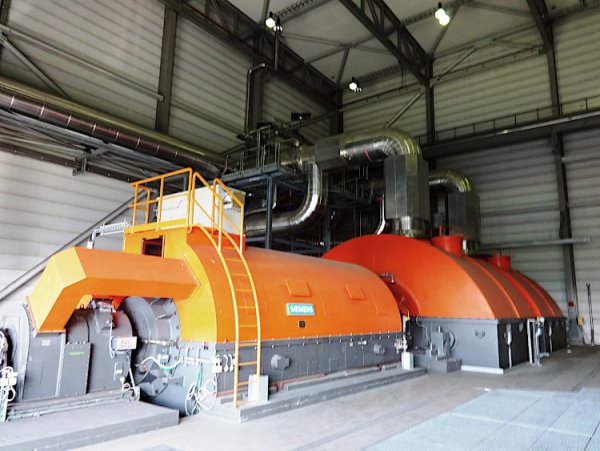Combining electric machines, automatic excitation control
Combination electric cars — a system of excitation of electric machines, in which the excitation flux automatically changes with the load of the machines (or, in general, the load of the electric circuit connected to the electric machine).
Combining DC machines is done by superimposing on their poles, together with a parallel winding connected in parallel with the armature circuit, a series winding. Such a machine is called a compound or mixed excitation machine.
AC machine mixing is applied for synchronous machines — generators, compensators, motors — and is generally regarded as a system (or part of a complex system) for automatically controlling the excitation of a synchronous machine.
Excitation system — a set of nodes and devices designed to receive and control the excitation current of synchronous machines.The direct current flowing through the excitation winding of the machine forms a rotating electromagnetic field, which creates an emf at the terminals of the stator winding.
The excitation system, as one of the most critical elements of the synchronous machine, has a significant impact on the reliability of the operation of power plants and consumers, on the stability of the parallel operation of synchronous machines. in the electrical system.
The excitation system of synchronous machines includes:
- an exciting coil located either in the slots of the rotor or in its poles in the form of coils. Its ends are removed by slip rings to which a constant voltage is applied from the exciter;
- exciter - DC power supply and auxiliary equipment to it;
- automatic field controller that varies the field current of the synchronous machine in accordance with the selected field regulation law.
Automatic excitation control (ARV) is carried out more efficiently and with the help of simpler and more reliable equipment, if mixing is used in the ARV system, since it significantly reduces voltage deviations when the load changes, increases the stability of the synchronous machine (and, therefore, power systems in general), makes it easier to start engines comparable in power to generators. The latter is very important for autonomous power plants of small and medium power.
The maximum transmitted power through the power line under the conditions of static and dynamic stability is largely determined by the parameters of the excitation system.Static stability depends on the sensitivity of the excitation system to mode change, which is related to the type and setting of the ARV and the time constants of the excitation system elements (ARV, exciter, and excitation coil).
Electronic voltage regulators with flexible feedback and voltage-rectified combination devices adjust the excitation in proportion to the deviation of the operating parameter - voltage or current.
These ARVs are most widely used on synchronous machines. Strong controllers regulate not only the deviation, but also the rate and acceleration of change in one or two operating parameters (current, voltage, frequency, angle of displacement between the voltage at some point in the system and the EMF of a synchronous machine).
Numerous options for schemes for combining synchronous machines are divided into:
-
Making up, directly or indirectly, depending on whether the output of the excitation system circuit is connected directly to the excitation circuit of a synchronous machine or through an amplifier (when this circuit is included in the excitation circuit of the exciter or sub-exciter). They are seen as amplifiers of electrical machines;
-
Composition by current, voltage or angle of a synchronous machine, etc. — depending on what operating parameters associated with a change in load act at the input of the circuit (in particular, there are circuits of the excitation system for the average current of a group of a synchronous machine, for current lines);
-
single-, two- or three-phase - depending on whether the excitation system responds to changes in operating parameters in one or more phases of the alternating current circuit;
-
phase or non-phase - depending on whether the excitation system is phase-sensitive, that is, responsive to a change in the phase angle between the current vectors and the voltage of the alternating current circuit;
-
linear or non-linear — depending on whether the proportionality factor between the deviation of the rectified current at the output of the circuit and the deviation of the mode parameter at the input of the circuit, making it constant within the specified limits of the mode change;
-
controlled or uncontrolled — depending on whether the above coefficient is changed automatically by a special control (corrective) action.
Combining synchronous machines is widely used because of the high value of automatic excitation control, which is one of the main means of increasing the stability of parallel operation of synchronous machines.
For synchronous machines with low power (up to 1-2 MW), direct phase mixing (controlled and uncontrolled) with the complete replacement of the machine exciter with rectifiers is widely used. self-excitation of a synchronous machine.
Controlled mixing is performed for installations where it is necessary to maintain a constant machine voltage with an accuracy better than ± 3-5%. Management is carried out by the so-called voltage regulator.
For low-power synchronous machines with machine exciters, automatic excitation regulators are produced according to the phasing scheme controlled by a voltage corrector.
In the general theory of automatic control, the combination of electric machines refers to control systems for the disturbance action of the load, which can be combined with control for the deviation of the stabilized parameter (combined systems).

